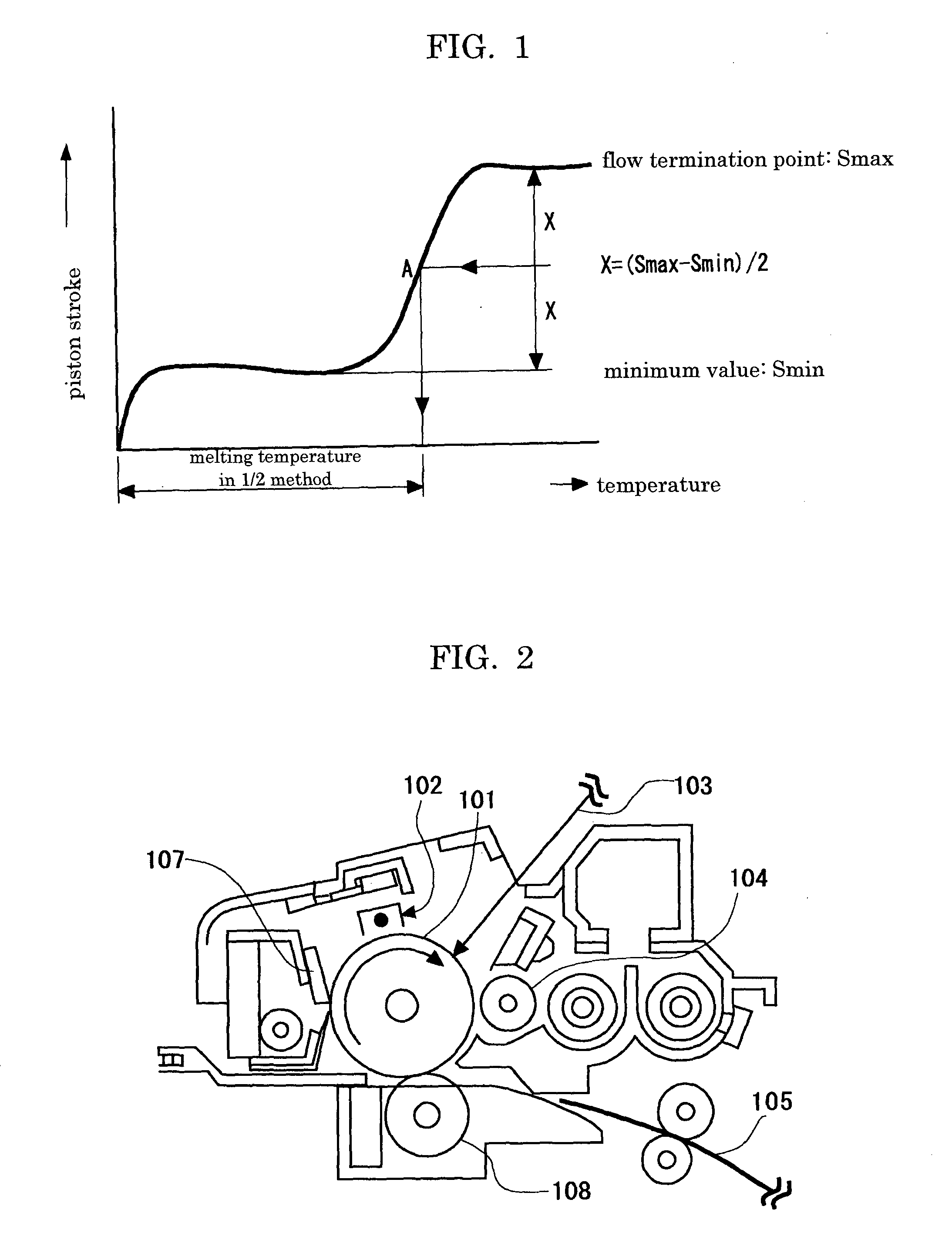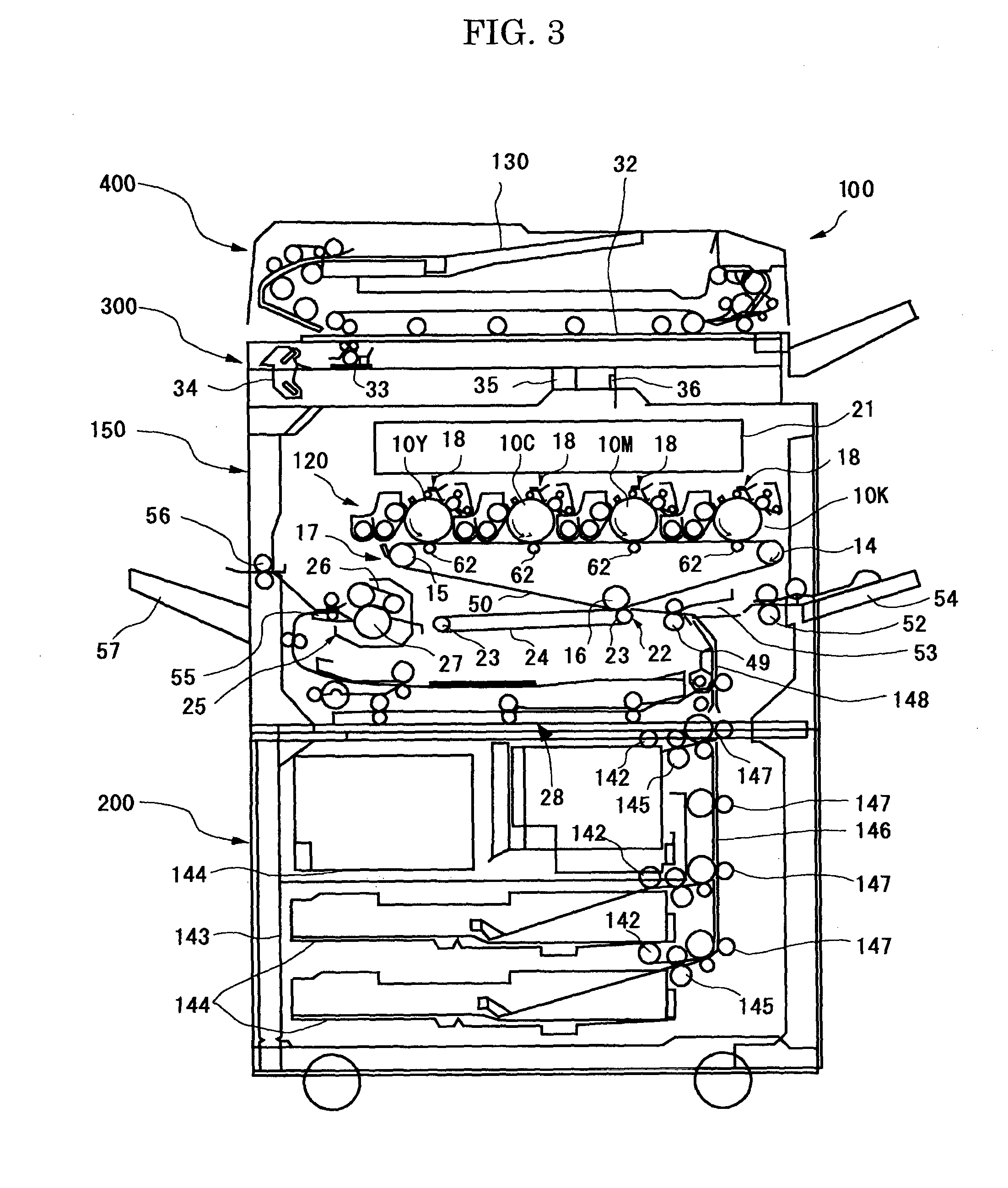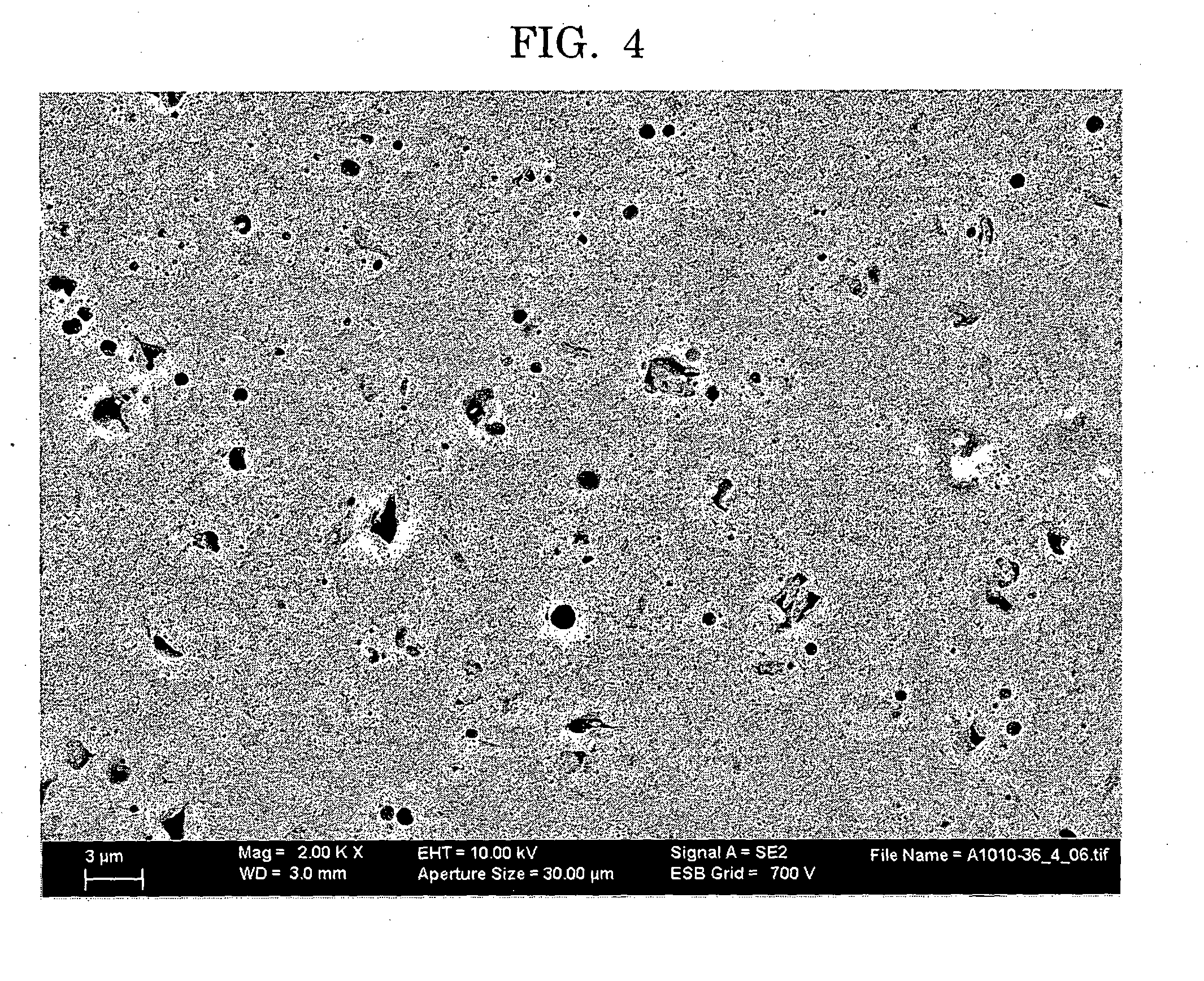Toner, developer, and image forming apparatus
a technology of toner and developer, applied in the direction of electrographic process, electrographic apparatus, instruments, etc., can solve the problems of inability to obtain favorable image quality, large amount of wax exposed at the toner surface, and inability to yield adequate toner releasability, etc., to achieve excellent low temperature fixing ability, excellent resistance to smear, and transfer ability of toner
- Summary
- Abstract
- Description
- Claims
- Application Information
AI Technical Summary
Benefits of technology
Problems solved by technology
Method used
Image
Examples
example 1
Preparation of Organic Solvent Phase
[0308]A raw material solution was obtained by mixing 2,493 parts of Wax Dispersion Liquid 1, 500 parts of Masterbatch B and 1,012 parts of ethyl acetate for 1 hour.
[0309]Then, 1,324 parts of the raw material solution was moved into a reaction vessel. Subsequently, using a bead mill (ULTRA VISCOMILL, manufactured by AIMEX CO., Ltd.), the raw material solution was passed three times under the following conditions so as to disperse the carbon black and the wax: the liquid feed rate was 1 kg / hr, the disc circumferential velocity was 6 m / sec, and 0.5 mm-zirconia bead packed to 80% by volume. Subsequently, 1,324 parts of a 65% of ethyl acetate solution of Unmodified Polyester Resin A was added to the obtained dispersion liquid and passed through the bead mill once under the conditions described above, to thereby prepare an organic solvent phase.
[0310]The organic solvent phase had a solid content concentration of 50% under the measurement conditions of h...
example 2
[0323]Toner base particles were produced in the same manner as in Example 1, except that the heat temperature of the slurry after the removal of the surfactant was changed from 55° C. to 50° C. The toner base particles had a volume average particle diameter of 5.4 μm and a BET specific surface area of 2.4 m2 / g. Then, the toner base particles were treated with the external additive in the same manner as in Example 1, to thereby obtain a toner of Example 2.
example 3
[0324]Toner base particles were produced in the same manner as in Example 1, except that Unmodified Polyester Resin A was replaced with Unmodified Polyester Resin B in the preparation of the organic solvent phase. The toner base particles had a volume average particle diameter of 5.4 μm and a BET specific surface area of 2.3 m2 / g. Then, the toner base particles were treated with the external additive in the same manner as in Example 1, to thereby obtain a toner of Example 3.
PUM
| Property | Measurement | Unit |
|---|---|---|
| diameter D2 | aaaaa | aaaaa |
| diameter D2 | aaaaa | aaaaa |
| Tg | aaaaa | aaaaa |
Abstract
Description
Claims
Application Information
 Login to View More
Login to View More - R&D
- Intellectual Property
- Life Sciences
- Materials
- Tech Scout
- Unparalleled Data Quality
- Higher Quality Content
- 60% Fewer Hallucinations
Browse by: Latest US Patents, China's latest patents, Technical Efficacy Thesaurus, Application Domain, Technology Topic, Popular Technical Reports.
© 2025 PatSnap. All rights reserved.Legal|Privacy policy|Modern Slavery Act Transparency Statement|Sitemap|About US| Contact US: help@patsnap.com



